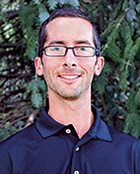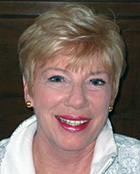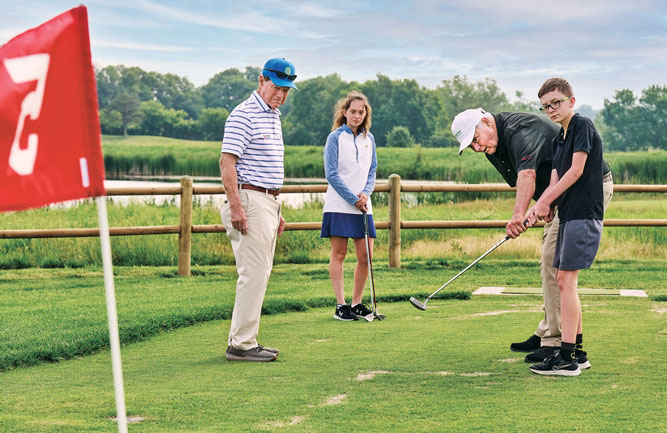Weekend warriors: First Tee volunteer project
Two Wisconsin assistants spearhead a volunteer project for the First Tee and build a chipping green in one weekend.
A recent volunteer project spearheaded by a couple assistant superintendents in Wisconsin resulted in two distinct benefits — those who had never been involved in building a green gained that experience and kids who play at a First Tee course in Madison can now practice chipping before they play a round.
This past September, Joe Sell, senior assistant superintendent of the Straits Course at Whistling Straits in Kohler, and Jake Schneider, former assistant golf course superintendent at Blackhawk Country Club in Madison, lead a team of local assistant superintendents and turfgrass students from the University of Wisconsin – Madison in building a chipping green at Monona Golf Course, a First Tee facility.
The gist of the project was for assistant superintendents to gain experience in something they don’t typically do. In this case, construction, specifically a 6,650-square-foot, USGA-spec chipping green that was built in two and a half days.
The group started on a Friday, and by Sunday at 5:00 p.m., the green was seeded and being watered-in. But it took Sell and Schneider much longer to get the project going. It took six months to plan the project and ask for donations. The entire cost of about $30,000 was paid for via donations from vendors and suppliers. The project cost The First Tee and the city of Madison nothing.
A major project
The idea for the project came from the assistants committee of the Wisconsin GCSA, on which Sell and Schneider served. Sell still does, but Schneider, who chaired the assistants committee for two years, left the industry in August 2013 for the landscape industry and now is a department manager for The Bruce Co. in Middleton. Sell has served on the assistants committee since 2008. The committee includes four others assistants who are spread throughout the state. Assistants who are members of the WGCSA meet every year at the association’s annual meeting, which is held in the winter.
“We had talked about doing a significant project, such as building a green,” Sell says. “The idea stemmed from the 2005 Golf Industry Show when the Builders Association (GCBAA) built a green on the trade show floor. We thought, ‘What if we did that on a bigger scale?’ because assistants don’t get that type of experience.”
Sell and Schneider, who met at North Shore GC in Menasha when they were teenagers, met with the director of The First Tee, Joni Dye; course superintendent, Shannon Barstow; and the manager of golf operations for the city of Madison, Ray Shane, and talked to them about the project and their intentions.
The First Tee staff was interested, so Sell sketched a design using maps from Google Earth and sent it to them with a proposed plan.
“They gave us the go-ahead in May,” Sell says. “Once we had their approval, they didn’t need to do anything. We got all the materials — the fill, pea stone, mix, hand tools, etc., which were all donated through local vendors and area golf courses. The sand came from two hours away, and we phoned a friend who had trucks to haul it for us on weekends. Jake and I reached out to vendors, and most said yes right away.”
“Getting the funding and materials aligned was more difficult than actually building the green,” Schneider laughs.
Monona Golf Club, a 9-hole regulation course, is a fledgling First Tee chapter designated in 2011, according to Dye, who says it features challenging greens that aren’t too speedy, junior tee boxes, and a driving range, but it had no chipping green.
“Joe and Jake approached me and asked what they could do for the kids of The First Tee,” she says.
Barstow and the city maintenance crew selected the best place to build the chipping green, which was behind the clubhouse. 10 to 12 kids can use the green at any time.
“It’s a huge gift,” Dye says. “It was amazing this gift fell in our laps.”
Giving back
The city of Madison has a long-term plan for the four golf courses it operates, but renovating the clubhouses is priority. As such, there were no plans for a chipping green.
“We don’t use taxpayer money,” Dye says. “The players pay for the course maintenance. If we fail to support our city courses adequately, the city will consider shutting them down.”
Sell took the lead on the project because he had a background in construction. There were about 25 volunteers, including some of the grounds crew from Whistling Straits, helping out on the second day.
“The whole idea of the project was to get assistants good experience and give back to the community,” Sell says.
“I participated in the project to get experience in aspects of the job I wouldn’t have gained otherwise,” Schneider says. “I didn’t have experience building greens.”
The construction of the chipping green didn’t disrupt play. With the size of the crew, Dye knew the project wouldn’t take long. Barstow and Sell did much of the prep work. “On paper, the project sounded more daunting than it really was,” Schneider says. “Even though I left the industry, I still wanted to help.”
“It was easy to work with superintendent Barstow, who made the project a real pleasure,” Sell says.
Sell, inspired by time lapse videos made popular with GoPros, borrowed a trail camera, mounted it and took pictures of the site every 15 minutes. He created a video with the pictures and music. It can be viewed at the bottom of this post.
Valuable experience
For Sell, it’s important that assistants are getting experience they normally wouldn’t gain in their jobs. That’s one of the benefits of being on the assistants committee, providing those types of opportunities.
Sell says many local GCSAA chapters don’t have assistant committees that can involve assistants or connect them to projects in which they can learn. He says there are a steady number of assistants who are members of the WGCSA, but the assistants committee is trying to grow that number by getting the word out.
“The education session is our signature event in the winter,” he says. “We’re trying to get that off the ground and focus on building our team.”
Various economic forces influence assistants to become more long term in their position, so being part of the assistants committee results in valuable experiences that connect them to more people in the industry. Sell acknowledges that because of the economy and the lack of new golf courses being developed, many assistants don’t have opportunities to move up and become superintendents as soon as they might like.
But, more than anything, Sell feels it’s important to give back to the community and help grow the game. “I really wanted to do something educational for the assistants, while also doing something for the community. There are small groups out there that think golf courses don’t do anything good, (they) just take their clean water and put chemicals in it. It meant a lot to do something to give back to the
community.”
“We haven’t had a chance to use it,” says Dye, who retired Dec. 16. “The green grew in in the fall, so we’re chomping at the bit to set up a chipping challenge for the kids.”
Following the project, Sell was inspired to create a video out of the images and accompanied by music.













